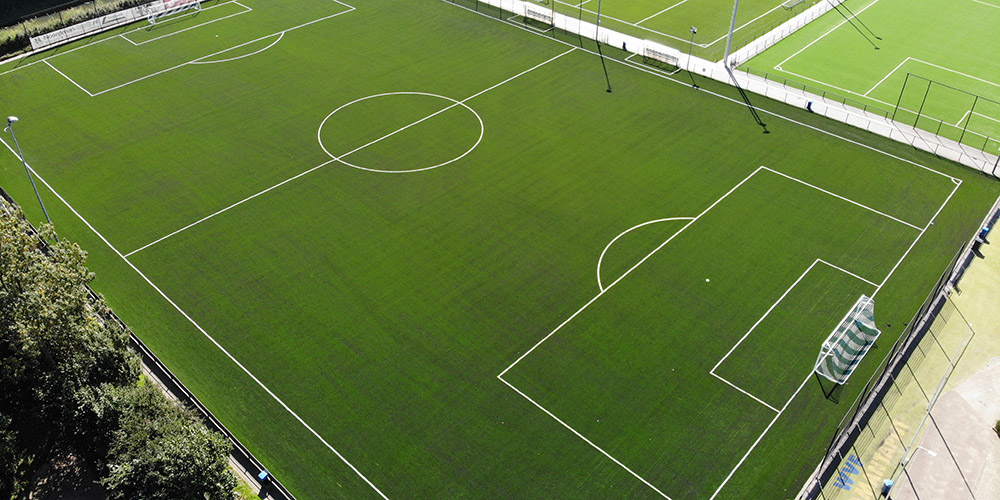In the world of professional sports, a well-built field makes games safer. FIFA modified its regulations in 2004 to permit sanctioned matches to be played on specific synthetic surfaces. During a handful of games in the 2010 men’s World Cup in South Africa, artificial fibers were used to enhance the field. Additionally, all World Cup matches, and training sessions must take place on the same surface, according to FIFA regulations.
Permeable Aggregates: The Field’s Base
A good foundation is needed for a synthetic turf field to drain well and last a long time. So, permeable aggregates can help.
“Permeable” means that water can move through the foundation, and “aggregates” is the technical term for stone products. Field turf uses a specific formula, or gradation, of permeable aggregates to help the field drain and make a stable, level playing surface.
The stone base has drainage pipes built into it to help move water away from the field. If you use the wrong aggregate, you can tell because the grass will look like the top layer of stone.
The Airbag in the Field: E-layer
E-layer pads are like a field’s airbags. The pad is a rubber layer just below the artificial turf and above the foundation. It softens the fall of a player.
Rubber is added to the mix for the e-layer of synthetic turf because it is so light. This gives the pad weight, making it both soft and firm.
How the layer pad is put in place is similar to how asphalt is spread. A bag of layer mixture is dumped onto the field by a forklift from a height above the ground. Then, another machine flattens and squeezes the material. The crew uses special tools to get rid of any bumps.
The rubber layer is made to fit a specific sieve size and must be completely dry. Without drying the pad, the moisture in the rock could destroy the layer mixture.
The Topsoil of the Field
On the field, artificial grass rolls are put down and then unrolled. The edges of each piece of turf are then sewn to the edges of the next piece, making something like a big patchwork quilt. When this turf quilt is perfectly flat, stakes are used to hold it in place.
At this point, the artificial turf is almost done. Just some infill is needed presently. The only difference between real grass and synthetic turf is that the blades of the fake grass are hard and polished. Those grass blades would stand up for a short time with the infill.
Infill is like the field’s topsoil. Sand and something springy, like crumb rubber, coconut husk, or cork, are usually used.
The infill sand acts as ballast, making the carpet heavier, so it doesn’t move around. The sand also cushions and keeps the material from being too springy.
The infill is spread on the turf field in layers, and then a special machine brushes it down to the bottom of the carpet. Infill sand mixed with a springy material makes up 150–375 tons of a typical field. As part of the field certification, the depth and evenness of the infill are checked.
